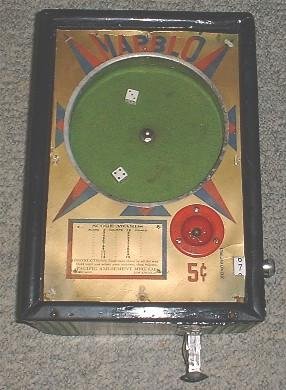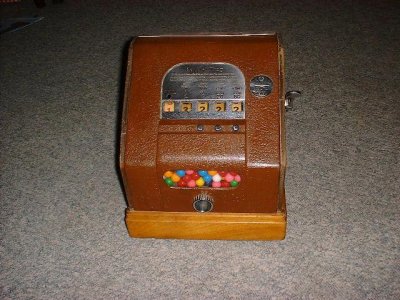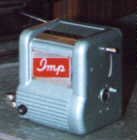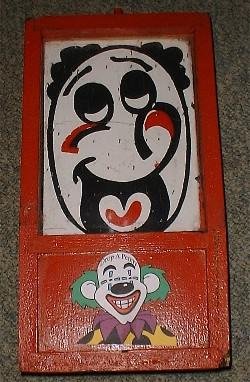tiltjlp
PN co-founder
- Joined
- Jun 9, 2003
- Messages
- 3,403
- Reaction score
- 145
- Points
- 65
- Favorite Pinball Machine
- Flying Trapeze 1934
During my neverending search for Bagatelle images, I sometimes run across some oddities. Just last night a found five Trade Stimulators I'd like to share with y'all. I think I'm fascinated by these gadgets because although I know they were impossible to win at, I probably still would've been suckered in. So here's info on the first, and the image.
1931 Pacific Amusements Malrboro. Pacific Amusements is best know for creating the first Pin game to use electricity, "Contact" in 1933. Before the creation of Contact, Pacific Amusements produced Trade Stimulators for use in bars etc. This is a very rare 1931 Pacific Amusements Marblo trade stimulator. A patron inserts five cents into the coin slot and the coin slides to a window below so that the operator can verify a real coin was used. The patron then push's in the mechanical button attached to the slide and rotates a knob on the right side of the machine and selects a number from 2 to 12. Simultaneously, a small ball is placed on a pedestal which will fall off and indicate a "tilt" of the machine if the patron attempts to move it. When the button is released, the selected number is locked in place and two dice are sent tumbling below the glass. If the dice end up with the number the patron selected, face up, the operator would payout based on a chart printed on the machine.
tiltjlp
1931 Pacific Amusements Malrboro. Pacific Amusements is best know for creating the first Pin game to use electricity, "Contact" in 1933. Before the creation of Contact, Pacific Amusements produced Trade Stimulators for use in bars etc. This is a very rare 1931 Pacific Amusements Marblo trade stimulator. A patron inserts five cents into the coin slot and the coin slides to a window below so that the operator can verify a real coin was used. The patron then push's in the mechanical button attached to the slide and rotates a knob on the right side of the machine and selects a number from 2 to 12. Simultaneously, a small ball is placed on a pedestal which will fall off and indicate a "tilt" of the machine if the patron attempts to move it. When the button is released, the selected number is locked in place and two dice are sent tumbling below the glass. If the dice end up with the number the patron selected, face up, the operator would payout based on a chart printed on the machine.
tiltjlp
Attachments
Last edited:





